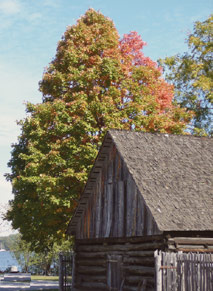Hannah and Her Family in 1739
London Town, 1739

By 1739, London Town was a busy tobacco port and a center of commerce that rivaled nearby Annapolis. Many tradesmen and craftsmen had settled in London Town, including carpenters, coopers, watermen, shipwrights, tailors, and physicians. As the economy in Great Britain had improved, fewer people came to America as indentured servants. The colonists now relied more heavily on enslaved laborers.
Within London Town and the colonies in general, distinct social classes had developed. Landowners and planters were at the top of the social order. They held most positions of power. Some of them had inherited their land and money from their families. Sea captains were also well respected. Right beneath them were merchants, innkeepers, and ferry operators. Tradesmen and sailors followed. Many of these people in the “middling” classes worked very hard, sometimes in multiple businesses, to make a comfortable life for themselves and their families. People within the merchant or middling class could often afford hired or enslaved help. At the bottom of society, with the fewest opportunities to rise economically and socially, were free servants, indentured servants, and enslaved persons.


